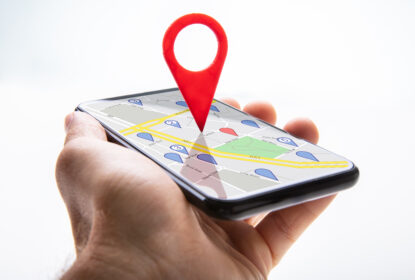Throughout the entirety of 2020, the entire world has been impacted by the emergence and subsequent spread of the novel coronavirus. This virus, commonly known as COVID-19, originated from a food market in Wuhan City, Hubei Province, China. In a matter of a few weeks, this virus spread across the entire world, crossing borders and oceans until it reached virtually every corner of the world. The World Health Organization (WHO) declared that COVID-19 was a global pandemic in early March. Since this declaration, world governments, both national and local, have made difficult decisions to protect the health and safety of the public.
Many governments have issued stay-at-home or shelter-in-place orders, which ban the gathering of ten or more people, closed bars and gyms, and limited access to other establishments. While many places in the world are beginning to reopen, like in Texas, the several months of closures and slowed business have already affected many industries.
Many businesses were forced to temporarily close their doors, which meant consumers were not able to take advantage of the services that are normally offered. With customers asked to remain in their homes and businesses closing, consumer behavior has shifted during this period. Consumers have had fewer opportunities to make purchases than ever before, so there is no surprise to see new consumer behavior trends emerging during the pandemic.
ARYU Advertising continues to monitor the situation surrounding COVID-19 closely, employing safe practices to keep our team, customers, and community safe. Throughout this time, we’ve kept a close eye on the changes in consumer behavior to ensure we are better able to support our customers in the future.
Consumer Behavior Trends
According to the EY Future Consumer Index, four major consumer trends are beginning to emerge throughout the current global pandemic. The EY Future Consumer Index tracks consumer behavior and sentiment over a period and across various regions. Their goal is to identify new emerging consumer segments. The survey they conducted during the current crisis was done to garner a unique outlook on the temporary consumer reactions to COVID-19 and what the future for consumers post-COVID-19 will be like.
In their survey consisting of 4,859 participants across the United States, Canada, the United Kingdom, France, and Germany, they tracked the sentiment and behavior of consumers. In their results, four consumer behavior trends emerged.
“Cut Deep”
In the results of the EY Future Consumer Index survey, “Cut Deep” was one of the four segments highlighted. 27.3% of participants fell into this category. These individuals reported spending less money across all expense categories, as the pandemic has impacted employment for millions across the world.
Most consumers in this segment are over 45 years old. Unfortunately, they have also seen the greatest impact on their employment status, with over a fourth of their jobs either temporarily or permanently suspended. 64% of those in the “Cut Deep” segment have only been buying essential items, while 78% have cut spending entirely. Brands are losing status, as well, as about a third of respondents reported that brands are not significant in the current situation.
“Stay Calm, Carry On”
Many consumers have not changed their spending habits at all. 26.2% fell into the “Stay Calm, Carry On” segment of the results, meaning they have continued to spend like nothing has changed. Many of these individuals feel as though this pandemic has not impacted them directly, which contradicts those in the “Cut Deep” category.
Only 21% are spending more on groceries, while just 18% are spending less. The majority seem to have not altered their spending habits much at all.
“Save and Stockpile”
Most survey participants fell under this category. 35.1% of respondents fell in the “Save and Stockpile” segment. These individuals do not feel hopeful for the future during the COVID-19 pandemic. Overall, the consumers who fell into this category feel more worried about the future of their families and long-term financial outlook.
Most participants reported spending less on clothing (72%) and leisure (85%), while 36% reported spending more on groceries.
“Hibernate and Spend”
Finally, the last of the four emerging consumer behavior trends is “Hibernate and Spend.” 11.4% of participants reported that they were spending more across all categories during the ongoing pandemic. This group is full of younger people, ranging from 18-44 years old. These people feel most concerned about the impact the COVID-19 pandemic will have.
Just 40% of individuals in this section admitted to shopping less, while 42% reported a change in the products they buy. Furthermore, brands carry more weight for those in the “Hibernate and Spend” segment, as 46% say brands are more vital than ever.
Consumer Behavior Trends Post COVID-19
The way consumers interact with brands and businesses has expectedly changed amidst the current pandemic. However, once the pandemic has cleared, experts don’t expect consumer behavior to revert to the way it was.
In the EY Future Consumer Index, 42% of consumers felt that the way they shop has fundamentally changed. The pandemic has led to changes in consumer behavior, but the same survey also predicts that these four could shift into five new categories:
- “Keep Cutting” at 13%
- “Stay Frugal” at 22%
- “Get to Normal” at 31%
- “Cautiously Extravagant” at 25%
- “Back with a Bang” at 9%
Most respondents want to “Get to Normal.” They feel as though their lives were hardly affected, so their spending didn’t change. Those who are “Cautiously Extravagant” believe that we are heading towards a global recession, but they have middle to high income and are cautiously optimistic. They plan on spending more on non-essential after the crisis.
Those who choose to “Stay Frugal” will spend slightly less with some deep cuts. They are trying to get back on their feet and are pessimistic about the future. Some individuals will continue to “Keep Cutting” their spending. These people were greatly affected by the pandemic. Finally, a small group of participants, mostly young people who still work, will “Come Back with a Bang.” Their daily lives were most disrupted, but they expect to spend more across the board after the pandemic has passed.
Unsurprisingly, new consumer behavior trends started to emerge during this crisis. Consumers are unsure about their income and have begun to prioritize their spending. These current shifts also suggest potential trends in the months following the pandemic. As always, ARYU Advertising will continue to monitor the current situation to ensure we are as safe as possible while offering our customers quality service.










